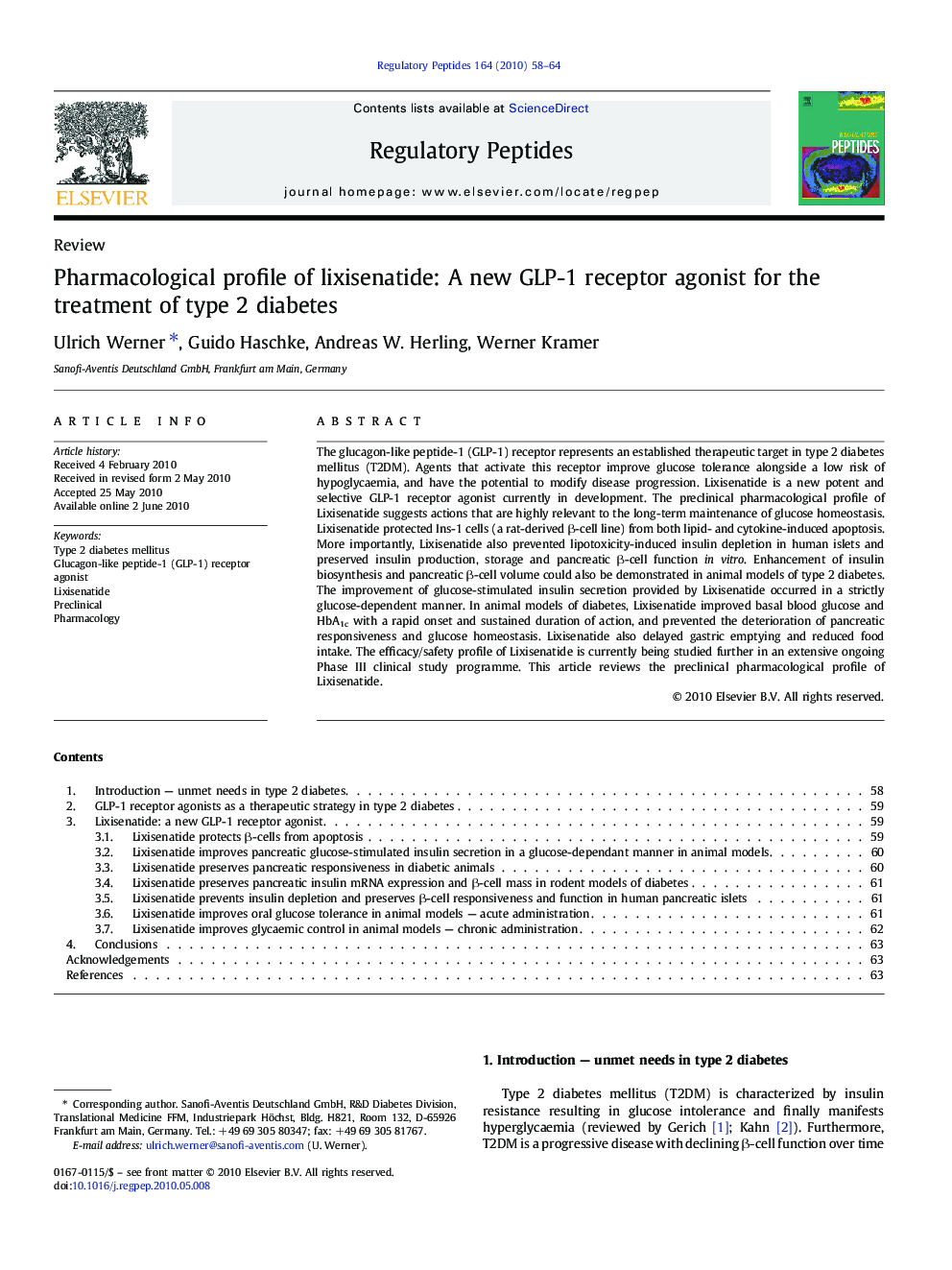| Article ID | Journal | Published Year | Pages | File Type |
|---|---|---|---|---|
| 2022812 | Regulatory Peptides | 2010 | 7 Pages |
The glucagon-like peptide-1 (GLP-1) receptor represents an established therapeutic target in type 2 diabetes mellitus (T2DM). Agents that activate this receptor improve glucose tolerance alongside a low risk of hypoglycaemia, and have the potential to modify disease progression. Lixisenatide is a new potent and selective GLP-1 receptor agonist currently in development. The preclinical pharmacological profile of Lixisenatide suggests actions that are highly relevant to the long-term maintenance of glucose homeostasis. Lixisenatide protected Ins-1 cells (a rat-derived β-cell line) from both lipid- and cytokine-induced apoptosis. More importantly, Lixisenatide also prevented lipotoxicity-induced insulin depletion in human islets and preserved insulin production, storage and pancreatic β-cell function in vitro. Enhancement of insulin biosynthesis and pancreatic β-cell volume could also be demonstrated in animal models of type 2 diabetes. The improvement of glucose-stimulated insulin secretion provided by Lixisenatide occurred in a strictly glucose-dependent manner. In animal models of diabetes, Lixisenatide improved basal blood glucose and HbA1c with a rapid onset and sustained duration of action, and prevented the deterioration of pancreatic responsiveness and glucose homeostasis. Lixisenatide also delayed gastric emptying and reduced food intake. The efficacy/safety profile of Lixisenatide is currently being studied further in an extensive ongoing Phase III clinical study programme. This article reviews the preclinical pharmacological profile of Lixisenatide.
